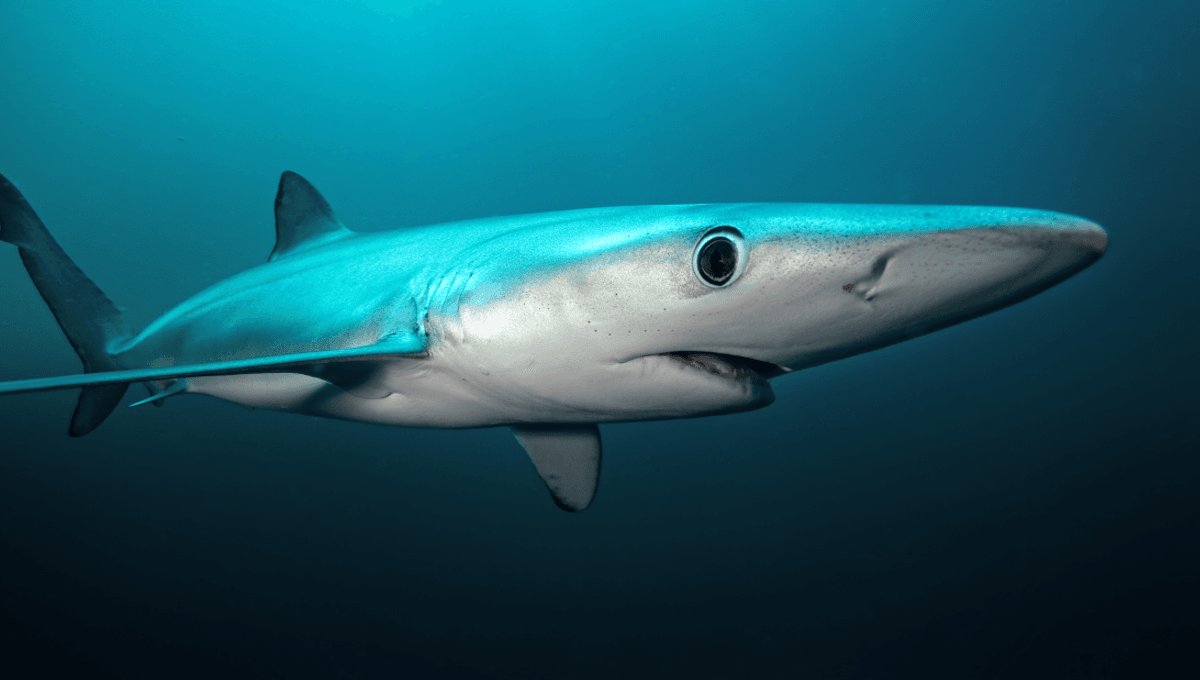-
أخر الأخبار
- استكشف
-
الصفحات
-
المدونات
-
المنتديات
Blue Sharks’ Freaky Tooth-Skin Makes It Possible For Them To Change Color To Green And Even Gold

“A Powerful Ability To Produce And Change Colour”: Turns Out Blue Sharks Don’t Always Look Blue
Sharks have teeth on their skin. It’s a weird idea to get your head around, we know, but that’s not even the big news. New research has revealed that the pulp found within the adapted gnashers on sharks’ skin may enable them to change color.
The shark in question is the blue shark (Prionace glauca), famous for being, well, blue. Doesn’t seem so impressive for an animal with such a name, but it’s hard to find true blue in the natural world. “Blue is one of the rarest colours in the animal kingdom, and animals have developed a variety of unique strategies through evolution to produce it, making these processes especially fascinating,” said Dr Viktoriia Kamska, a post-doctoral researcher in the lab of Professor Mason Dean at City University of Hong Kong, in a statement. The new research has revealed a unique nanostructure in blue sharks' toothy skin that not only explains their iconic coloration but also suggests they can change color. It all comes down to their strange dermal denticles, a derived tooth-like scale that effectively gives sharks a kind of armor. Like other teeth, they have pulp cavities and they contain guanine crystals and melanosomes. The guanine is a mirror for blue, while melanosomes absorb other wavelengths of light. A blue shark's dazzling dermal denticles. Image credit: Dr Viktoriia Kamska “When you combine these materials together, you also create a powerful ability to produce and change colour,” explained Professor Dean. “What’s fascinating is that we can observe tiny changes in the cells containing the crystals and see and model how they influence the colour of the whole organism.” As well as explaining what makes the blue shark so darn blue, it also appears that through the same mechanism, that blue can change color to greens and even golds. This is the result of space changes between the layers of guanine crystals within the dental pulp cavities, with a tighter squeeze being bluer, while more space gives more green. What’s perhaps most intriguing of all is that the space changes can be mediated by environmental changes. One example the researchers give is greater depth, whereby the water pressure would increase, squeezing together the layers and creating a deeper blue. This could be beneficial to the sharks as it makes them more camouflaged where light levels are low. Fascinating stuff for shark fans, and also something for the biomimeticists to get excited about. Just a blue shark doing what blue sharks do (look blue). Image credit: Pommeyrol Vincent / Shutterstock.com “Not only do these denticles provide sharks with hydrodynamic and antifouling benefits, but we’ve now found that they also have a role in producing and maybe changing colour too,” said Professor Dean. “Such a multi-functional structural design – a marine surface combining features for high-speed hydrodynamics and camouflaging optics – as far as we know, hasn't been seen before.” “As nanofabrication tools get better, this creates a playground to study how structures lead to new functions. We know a lot about how other fishes make colours, but sharks and rays diverged from bony fishes hundreds of millions of years ago – so this represents a completely different evolutionary path for making colour.” This research is being presented at the Society for Experimental Biology Annual Conference in Antwerp, Belgium, on July 9, 2025.



